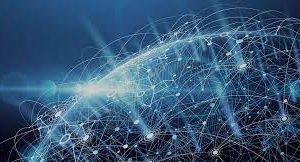Cambridge scientists have discovered that imposing physical constraints on artificial intelligence, mimicking the limitations faced by the human brain, enables AI systems to evolve characteristics akin to those found in complex organisms’ brains. The brain’s ability to solve intricate problems while conserving energy served as inspiration for this exploration.
The study, published in Nature Machine Intelligence, involved creating a simplified brain model using computational nodes and applying constraints mimicking physical distances between neurons. Similar to biological brains, where distant neurons face communication challenges, these constraints were replicated in the artificial system.
Tasked with a maze navigation exercise, the AI system learned by adjusting connections between nodes, mimicking synaptic strength changes in learning brains. Notably, due to the imposed physical constraints, the AI system developed ‘hub’ nodes acting as information conduits across the network, mirroring real brain strategies to overcome distance limitations.
Unexpectedly, individual nodes exhibited flexible coding, representing various maze properties rather than specializing in specific ones, a trait seen in complex organisms’ brains. This phenomenon hints at a deeper understanding of why brains, including the human brain, organize themselves as they do.
The findings suggest that when AI systems operate under physical constraints, they manifest complexities similar to the human brain’s organizational strategies. This exploration may offer insights into fundamental aspects of brain development, shedding light on why biological brains evolve in specific ways. This study highlights how AI systems, constrained similarly to biological brains, exhibit brain-like features, paving the way for potential advancements in AI and neuroscience research.






















